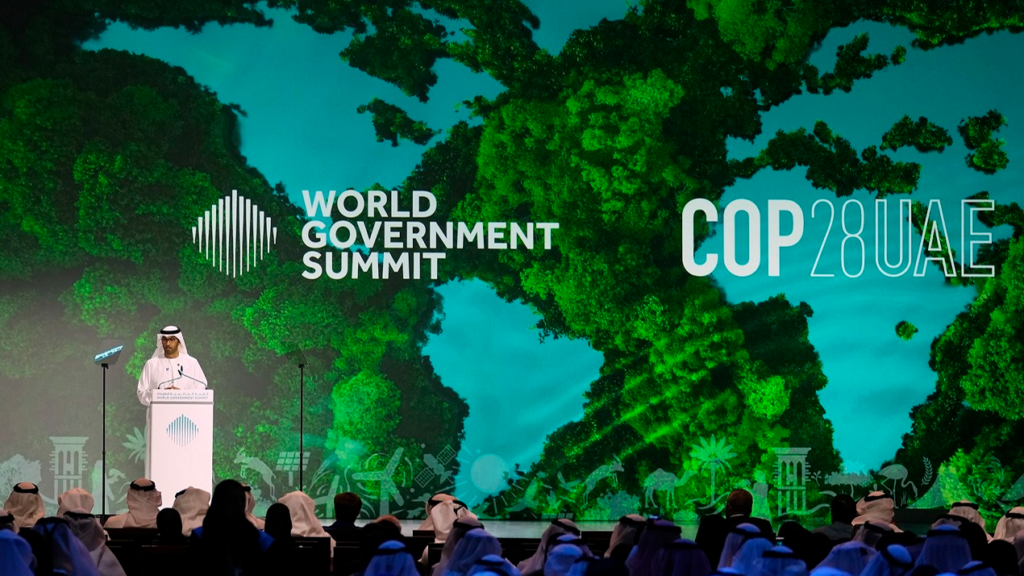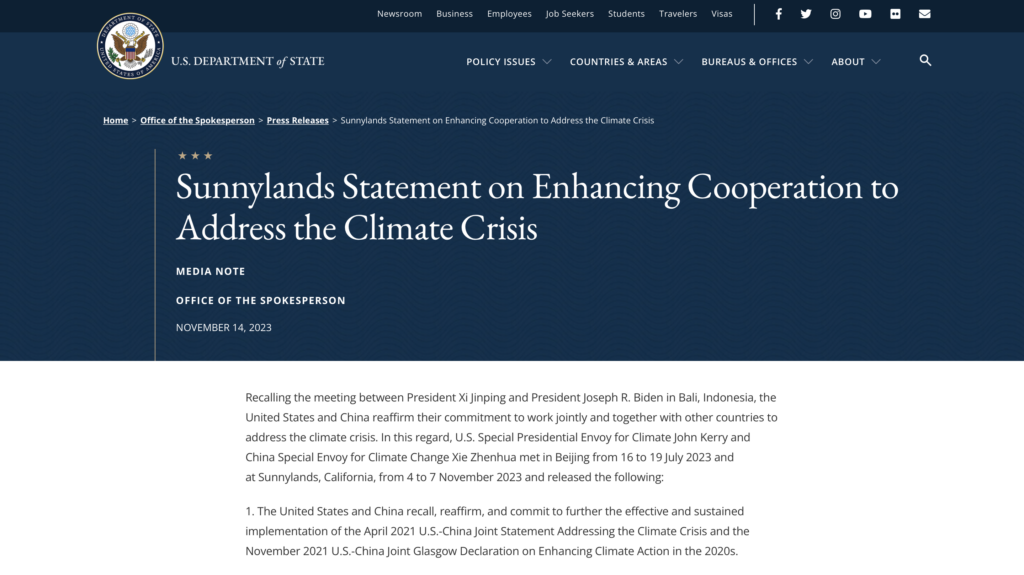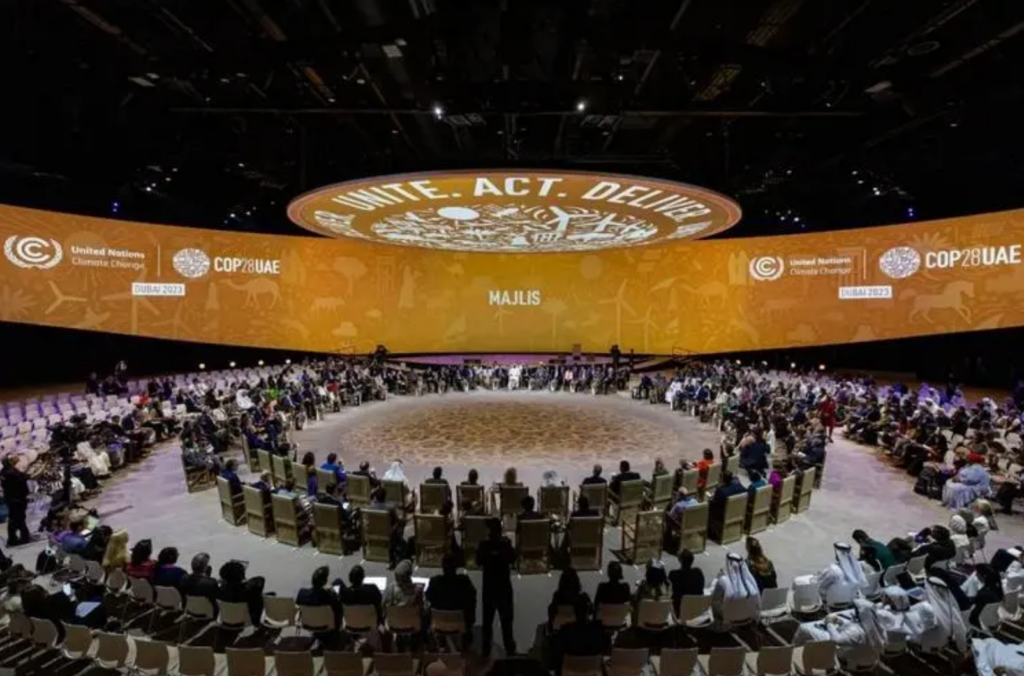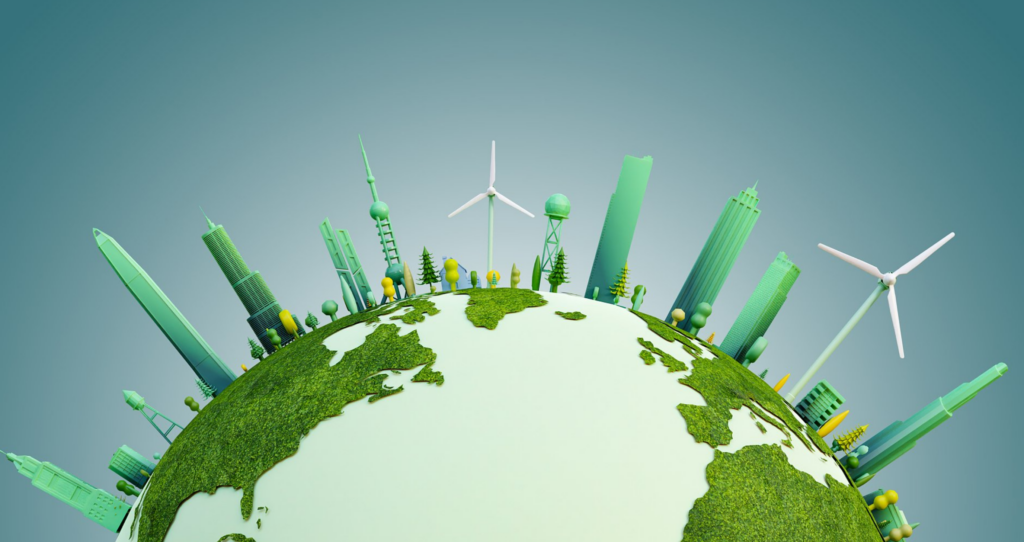
On December 9, the ninth day of the 28th United Nations Climate Conference (COP28), at 4:30 p.m., China’s Special Envoy for Climate, Xie Zhenhua, held the first press conference of the Chinese delegation.
The impact of climate policies on trade, such as the Carbon Border Adjustment Mechanism (CBAM), is not on the agenda of this climate conference but is widely scrutinized and controversial.

On the first day of the conference, some EU countries led by Germany, the United States, Chile, Argentina, Indonesia, and other 36 countries set up the Climate Club, which implements uniform tariffs and carbon pricing policies internally and creates barriers externally, and includes major developed countries and some important new energy resource countries, but China is excluded.
The following is a summarized transcript of key questions from the conference.
Reuters: Regarding fossil energy, all four options have the concept of phase-out, can China accept the phase-out?
“There are more than four choices, and the positions on this issue are very antagonistic, China is in the process of intensive consultations with major countries and major groups, hoping to find a clear and correct direction for the future, but also reflecting the greatest inclusiveness, so that we can all accept the results.”
The Paper: What has China done to promote consensus on the issue of fossil energy?
“On November 15, before the opening of COP28, China and the U.S. issued the Sunnylands Statement on Enhancing Cooperation to Address the Climate Crisis, and one of the purposes of this statement is to propose solutions to some of the controversial focuses that may arise at this conference. Some countries are strongly opposed to phasing out or reducing fossil energy, and some countries are strongly in favor of phasing out fossil energy, and there are also some compromise solutions. We are in the process of communicating with all parties to find a solution that reflects the greatest inclusiveness and points out the way forward.”

Guardian: Does China support phasing out fossil fuels?
“We should vigorously develop renewable energy, gradually replace coal, oil, and gas with renewable energy, and ultimately solve the problem of greenhouse gasses. We do not prejudge the final result, but we accept a statement that can reflect everyone’s opinions, the general trend of energy transformation and innovation, and be also in line with the spirit of the Paris Agreement.”
CCTV Finance: More than 100 countries have signed a declaration to triple the installed capacity of renewable energy by 2030 compared with 2022, what progress has China made in this regard?
“China has made great contributions to the global energy transition and the development of renewable energy. So far, the cost of wind power has been reduced by 80% and the cost of photovoltaic power by 90%, which has laid a very good foundation for the large-scale deployment of renewable energy around the world. China’s installed capacity of renewable energy has exceeded that of coal power due to its vigorous development of renewable energy, which is a major shift in the energy structure, and we need to continue to strengthen the development and utilization of renewable energy and finally strive to gradually replace fossil fuels. The G20 has proposed that the global renewable energy target should be increased by a factor of two, and China supports this. In addition, China and the oil-producing countries in the Middle East should continue to cooperate in the development of renewable energy, the development of green hydrogen, green ammonia, green alcohol, and so on.”

Danish media: China’s previous goal was to achieve carbon peaking by 2030, is it possible that this goal will be advanced given the rapid development of renewable energy?
“This target does not need to be adjusted, we are talking about before 2030, exactly which year, we are now measuring. But we will propose which year to reach the peak and what is the absolute amount. China has moved from dual control of energy to dual control of carbon emissions, which is a strategic shift. If this shift is realized by 2025, China will come up with what year we are going to reach the carbon peak and what is the absolute amount of the peak. But it’s certainly not 2030, it’s before 2030.”
The New York Times: About a year and a half ago, the U.S. released the Inflation Reduction Act (IRA), which also has the additional purpose of reducing U.S. dependence on Chinese manufacturing and developing U.S. domestic manufacturing. What kind of impact do you think this U.S. bill has had?
“I recently visited the U.S. and saw that California has done a lot of work on climate action, and they also told me that a lot of the action that can be carried out is because of the subsidies provided by the Inflation Reduction Act, which provides incentives, and in terms of climate action, this bill has played a very important role. But again, the bill protects domestic technology and domestic products, so why can’t other countries’ technology and products be treated the same way in the US? Why can’t the technology and products of other countries get the same treatment in the U.S.? “

RFI: The UAE was the first country to contribute to the Loss and Damage Fund with $100 million. Is China, also an emerging economy, ready to contribute to the Loss and Damage Fund and provide funds?
“China has carried out South-South cooperation in the field of climate change to help developing countries improve their capacity to cope with climate change, mitigate and adapt to climate change, and we have been doing this for 10 years. during the past 10 years, we have carried out cooperation on green energy projects with more than 100 countries and regions, and we have constructed wind power and photovoltaic projects in Ethiopia, Argentina, and Montenegro, and we have signed 46 South-South cooperation documents with 39 countries, and have constructed 3,000 wind power and photovoltaic projects. We have signed 46 South-South cooperation documents with 39 countries, and have built three low-carbon demonstration zones, 70 mitigation and adaptation projects, and three early warning projects. We have carried out actions on the ground, both in terms of donations and financing. We have also organized 52 training courses on South-South cooperation to address climate change, training more than 2,300 officials and technicians from 106 countries and helping them to improve their capacity to address climate change. In the future, we will further intensify South-South cooperation and increase financial and technical cooperation with developing countries in this regard. Support and assistance to developing countries can take various forms, and we are strengthening cooperation with and support for developing countries through the two channels of South-South cooperation and the Green Belt and Road.”
(Source: U.S. Department of State, 2M, COP28)



